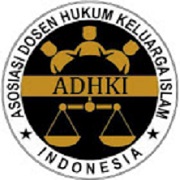THE ADVANTAGES OF WUDHU FOR SOME CONTEMPORARY PROBLEMS
DOI:
https://doi.org/10.24256/maddika.v1i2.1585Keywords:
Taharah, Contemporary, ProblemAbstract
This article aims to discuss the Hadast (excretion) and najis that are an obstacle for us to perform worship to Allah SWT. Repeating the study of taharah and najis in Islamic Fiqh will make us find a rule and discussion that we have never known before. It is necessary to Clean or clean first to worship to the maximum To get rid of the Hadast and unclean. Clean signals that we should always clean our souls from sin and all vile deeds. Clean is performed not only to achieve worship but also to maintain the cleanliness and health of the human body. We are required to know all the ins and outs of Clean and practice it correctly. There are still many Muslims who even do not understand Clean. The procedure of Clean has been mentioned in fiqh books in great detail. Always, with the method of content analysis and qualitative approach, the author tries to dig back into something that is rarely touched by fiqh books in general. In the reading of Pustaka, the author obtains the status of animal faeces that are halal eaten by the meat; it turns out that the wastes are not unclean according to various sects such as Malikyah and Hanabilah. So far, many people think that the faeces of chickens, goats, cows, and other livestock ate are unclean and can cancel Clean. Contemporary problems arise around Clean, such as a person whose body is full of tattoos and challenging to get rid of for the sake of his hifz An-Nafs Wudu 'remains if the tattoo can not be removed. Taharah has many other benefits, such as preventing Covid-19
References
Abū Zahrah, Muḥammad. Ushul fiqh. Jakarta: Pustaka Firdaus kerjasama dengan Perhimpunan Pengembangan Pesantren dan Masyarakat (P3M), 1999.
al- Kuwait (Daula), and WizÄrat al-AuqÄf wa-’š-Å u’ūn al-IslÄmÄ«ya. al- MausÅ«Ê»a al-fiqhÄ«ya 37 37. al-Kuwait, 1997.
Khatib Syabini. al-Iqna’ fi Hilli alfaz al-Minhaj. Kairo: Dar al-Ulum, 1988.
meirison. “Al-Fiqh Al-IslÄmiy wa ĀṡÄruhu ‘alÄ al-QÄnÅ«n al-ŪrÅ«biy.†Pascasarjana UIN Walisongo Semarang 2, no. Desember (2017): 193–217. doi:10.21580/jish.22.2524.
Meirison, Meirison. “Implementasi Tanqih Al-Manath Dalam Penerapan Hukum.†Nizham Journal of Islamic Studies; Vol 2 No 1 (2014): Mazhab Hukum Islam Di Indonesia, September 25, 2017. http://e-journal.metrouniv.ac.id/index.php/nizham/article/view/868.
———. “Mashlahah Dan Penerapannya Dalam Siyasah as Syar’iyah.†Ijtihad 32, no. 1 (April 5, 2019). doi:10.15548/ijt.v32i1.32.
Muhammad Hafil. “Wudhu yang Diyakini Sebagai Upaya Mencegah Virus Corona.†Republika. September 21, 2020, Monday, 4 Safar 1442 edition. https://republika.co.id/berita/q7a0ew430/wudhu-yang-diyakini-sebagai-upaya-mencegah-virus-corona.
Rasjid, Sulaiman. Fiqh Islam. Indonesia: Penerbit Sinar Baru Algensindo, 2010.
Sali, Meirison Alizar, Desmadi Saharuddin, and Rosdialena Rosdialena. “Takhrij Fikih Dan Permasalahan Kontemporer.†Al-Istinbath : Jurnal Hukum Islam 5, no. 1 (May 9, 2020). doi:10.29240/jhi.v5i1.1235.
Sayyid Sabiq. Fiqih Sunnah. Jakarta: Pena Pundi Aksara, 2006.
ZuḥailÄ«, Wahba az-. al-Fiqh al-islÄmÄ« wa-adillatuhÅ«: aÅ¡-Å¡Ämil li-ʾl-adilla aÅ¡-Å¡arÊ¿Ä«ya wa-ʾl-ÄrÄ al-maá¸habÄ«ya wa-ahamm an-naẓarÄ«yÄt al-fiqhÄ«ya wa-taḥqÄ«q al-aḥÄdīṯ an-nabawÄ«ya wa-taḫrīǧihÄ mulḥaqan bihÄ« fahrasa alfÄbÄʾīya Å¡Ämila li-ʾl-mauá¸Å«Ê¿Ät wa-ʾl-masÄʾil al-fiqhÄ«ya. Ǧuzʾ 11: al-FahÄris al-Ê¿Ämma: fahrasa alfabÄʾȳia Å¡Ämila li-ʾl-ÄyÄt wa-ʾl-aḥÄdīṯ wa-ʾl-mauá¸Å«Ê¿Ät al-fiqhÄ«ya. Nachdr. der vierten verb. Ausg. DimaÅ¡q BairÅ«t: DÄr al-fikr, 2002.
Ø£Øمد/الأنصاري, أبي ÙŠØيى زكريا بن Ù…Øمد بن, and Ù…Øمود عبد الإله سعد. غاية الوصول Ø´Ø±Ø Ù„Ø¨ الأصول ÙÙŠ الÙقه الشاÙعي. دار الكتب العلمية،, 2016. https://books.google.co.id/books?id=SZL4oAEACAAJ.
راÙعي، عبد الكريم بن Ù…Øمد, معوض، علي Ù…Øمد, and عبد الموجود، عادل اØمد. العزيز Ø´Ø±Ø Ø§Ù„ÙˆØ¬ÙŠØ² Ø§Ù„Ù…Ø¹Ø±ÙˆÙ Ø¨Ø§Ù„Ø´Ø±Ø Ø§Ù„ÙƒØ¨ÙŠØ±. بيروت: دار الكتب العلمية،, 2015.
نهاية المØتاج الى Ø´Ø±Ø Ø§Ù„Ù…Ù†Ù‡Ø§Ø¬: ÙÙŠ الÙقه على مذهب الامام الشاÙعي, 2009.
Downloads
Additional Files
Published
How to Cite
Issue
Section
Citation Check
License
Authors who publish in this journal agree to the following terms:
- Authors retain copyright and grant the journal right of first publication with the work simultaneously licensed under a Creative Commons Attribution License that allows others to share the work with an acknowledgment of the work's authorship and initial publication in this journal.
- Authors can enter into separate, additional contractual arrangements for the non-exclusive distribution of the journal's published version of the work (e.g., posting it to an institutional repository or publishing it in a book), with an acknowledgment of its initial publication in this journal.
- Authors are permitted and encouraged to post their work online (e.g., in institutional repositories or on their websites) before and during the submission process, as this can result in productive exchanges and earlier and greater citations of published work.




















